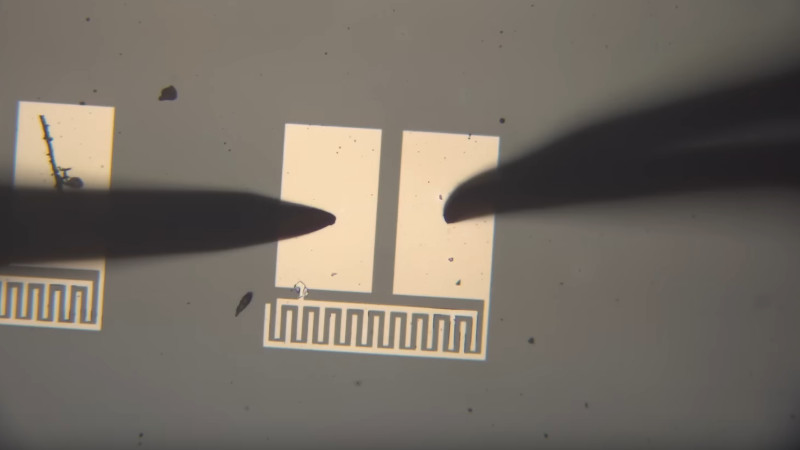On our travels round the hardware world we’ve encountered more than one group pursuing the goal of making their own silicon integrated circuits, and indeed we’ve seen [Sam Zeloof] producing some of the first practical home-made devices. But silicon is simply one of many different semiconductor materials, and it’s possible to make working semiconductor devices in a less complex lab using some of the others. As an example, [Breaking Taps] has been working with copper (II) oxide, producing photodiodes, and coming within touching distance of a working matrix array.
The video below the break is a comprehensive primer on simple semiconductor production and the challenges of producing copper (II) oxide rather than the lower temperature copper (I) oxide. The devices made have a Schottky junction between the semiconductor and an aluminium conductor, and after some concerns about whether the silicon substrate is part of the circuit and even some spectacular destruction of devices, he has a working photodiode with a satisfying change on the curve tracer when light is applied. The finale is an array of the devices to form a rudimentary camera sensor, but sadly due to alignment issues it’s not quite there yet. We look forward to seeing it when he solves those problems.
As we’ve seen before, copper oxide isn’t the only semiconductor material outside the silicon envelope.

















What about a bunch of photo diodes and a sheet of pref-board? A not quite homebrew way but good for a science fair project. You will need a big lens, save that box projection TV you find at the curb.
I’ve one ready to part out though it still works. Such optics will never be around again.
Awesome project!
What is a bit curious is that he seems to have mixed up the different copper oxides.
The one he should be interested in is the red one, Copper(I) oxide. Copper (II) oxide is black in appearance.
There is a huge body of research work on building solar cells based on Copper(I) Oxide, as is also mentioned in the Wikipedia article.
https://en.wikipedia.org/wiki/Copper(I)_oxide#Applications
Some reasons why we don’t see these in production:
– It’s very hard to create n-type Cu2O
– lifetime is not that great, because the other oxidation states of copper create electronic defects (who would have though)
Cuprous oxide can be easily made on copper clad PCBs by anodic oxidation. There may be easier ways to create a matrix of Cu2O photodiodes.
btw, this is the most impressive work on home-made Cu2O I have seen so far:
https://simplifier.neocities.org/optsolar
And this is a more low-tech approach:
https://cleanenergywiki.org/index.php?title=Cuprous_Oxide_Solar_Cell
I shall correct myself, apparently he is basing his work on a relatively new approach, where CuO is used as photocondutor: https://www.nature.com/articles/s41598-019-43667-9
It would still be easier to make a photodetecto array based on Cu2O at home…
“at home” still has to be pretty expensive considering the specialized equipment needed for each of those steps. too bad it all has to be at such a small scales.